Understanding Sonar Frequency

* This page contains affiliate links. The Great Lakes Fisherman may earn a commission on items purchased through these links. For more on this, please click here.
So, you’ve purchased that nice, new, and very expensive sonar unit that will solve all of your fishing problems right? Now, if only you knew how to use it. Never fear, The Great Lakes Fisherman is here to help take away the mystery of the modern sonar unit. Understanding the basic principles behind sonar technology will make you more adept at taking advantage of the full capability of the unit. In this article, we will focus on better understanding sonar frequency based on what I have learned about the process.
What is Sonar Frequency?
Frequency is the measure of how often something happens. In the case of sonar, we are measuring the number of sound waves that travel past a given point per second. Sound frequency is measured in hertz and 1 hertz is 1 sound wave per second. The human ear is capable of hearing sounds in the 20 hertz – 20 kilo-hertz range. Today’s fish finders use frequencies in the kilo-hertz range (thousands of hertz) to higher frequencies in the mega-hertz range (millions of hertz). Many of these units use a range of frequencies which make them more versatile. But in order to take advantage of that versatility, it helps to understand how these different sound frequencies affect different objects (targets) under the water.
How The Waves Are Generated and Received
Sound waves from your sonar are generated in your transducer. The word transducer is defined as something that changes electrical energy into physical (mechanical) energy or vice versa. In the case of your boat’s transducer, it does both by using an electrical switch that either connects the transducer to the transmitting portion of the circuit (electrical to mechanical) or the receiving portion (mechanical to electrical). Let’s discuss these 2 phases in detail.
Transmitting Phase
The process starts by your head unit taking its 12 volts of DC power from your battery and converting it to an AC voltage signal. This AC signal is what is then applied to the transducer via the transducer cable. The AC voltage creates an alternating electrical force on crystals that are located inside of your transducer. This pulse causes the crystals to physically vibrate and the frequency of the AC wave determines the frequency of the vibration. This is literally the conversion of electrical energy to mechanical vibrations (sound waves) and is very similar to what happens inside of an audio speaker.
Like all sound waves, the waves radiate from the crystal in all directions. So in order to focus them in one direction, the transducer is designed to absorb these waves in directions that are useless (ie, upwards) and keep the useful waves focused in the directions that are useful (downwards).
So now we have pulses (or pings) of sound waves radiating downward from the transducer and penetrating the water column. Like any sound wave, once these pulses interact with a material that has a different density than that of the water, some of the wave energy will be reflected back. This is known as an echo. This is what your transducer turns back into electrical energy in the receiving phase.
Receiving Phase
During the receiving phase of the process, the energy conversion is reversed. So when the echo wave reaches your transducer, it imparts a vibration on the crystals in the transducer, which in turn creates an electrical pulse in the circuit. This is detected by the main unit and through some fancy signal processing, the unit interprets these pulses and displays them as an object on your screen. It uses the delayed timing of the wave to determine the depth of the target and analyzes the wave forms to determine other features of the object (density and shape, for instance).
Low vs. High Frequency Waves
So now that we understand how the unit is interacting with material in the water, how can we use this to our advantage?
Low frequency waves are able to travel farther than high frequency waves. This is because low frequency waves are less likely to interact with material objects and thus keep more of their energy than do high frequency waves. In fact, whales use these low frequency signals to communicate across thousands of miles in the ocean. This makes lower frequency waves on your sonar better suited for detecting deep water targets. Low frequency waves also produce a larger scan cone. So not only can you detect better in deeper water, but you can also scan over a larger area.
So what is the advantage of high-frequency waves then? With high frequency, you are trading off volume of the water column for detail. The higher the frequency, the more interaction you’ll get with targets in the water which can be used to produce a more refined image on your unit’s display. You may have noticed that the newer live-imaging units utilize very high frequencies in the mega-hertz range. This is because live imaging needs to continuously obtain minute details of a target in order to project its continuous movement on your screen. But in order to produce these high frequency pulses, these units require a lot more energy. This is one of the main reasons that these units will drain your battery so fast.
CHIRP Technology
Which frequencies are better to use then? As with most things in life, the answer is not that simple. And this is precisely why most units today have multiple frequency options. When choosing between options, we must decide what we are willing to trade off in order to get what we are looking for. Lucky for us, CHIRP technology helps us with having to choose by giving us a bit of the best of both worlds in a single view. So, what is CHIRP?
CHIRP, or Compressed High Intensity Radar Pulse, is a feature designed into many modern units that uses a range of frequencies over a longer pulse to give us a more clear visualization on the screen of what is happening. High CHIRP covers frequencies in the ~150–240 kHz range, while medium CHIRP covers the 80–160kHz range. Because the pulse includes a range of frequencies, it reduces some of the trade-offs by allowing us to see the results of relative high and low frequency interactions at the same time. Low CHIRP typically covers frequencies that are less than 80 kHz . This is useful in the deep oceans, but is not much use for inland fishing. For more on how CHIRP works, check out this article by West Marine.
Down-Imaging and Side-Imaging
Down imaging and side imaging have become very popular in the last 10 years. So how are they different that standard 2d imaging? Down imaging is quite simply the utilization of high frequency pulses, taken over a very thin cone. In this way, the unit can put information together in a way that produces a clearer image. Think of it like this, instead of a single large cone of information with less detail, the unit will get the information by focusing on a smaller chunk of the cone with more energy and then sort of lace them together to form a more detailed image. Essentially, more of the energy is being focused on a smaller portion of the water column for greater detail. Side imaging works in the same way, but it directs the sonar pulses out the side of the transducer to produce images to the left and right of the boat.
Sensitivity Setting
The sensitivity setting on your unit has to do with how much of the signal coming from the transducer is displayed on your screen. The transducer is sending the signals, but the main unit is where the processing occurs. There is a processing circuit where that translates these signals to an image that makes sense to us humans. The sensitivity setting allows you, the user, to weed out or include weaker echoes should that you may not care about. This allows you to be able to better focus on the echoes you do care about. This is something that will likely need to be adjusted for each body of water, because each body of water has different amounts of suspended solids that can cloud your screen, making it difficult to see the targets that you are really interested in. There are many other settings (surface clutter, TVG, etc.) on your sonar that allow you to manipulate the transducer signal processing, but we will discuss those features in future articles.
Strategies on the Water
So with all of this information on frequency characteristics, how can we apply this to a day of fishing? Let’s break this down to some things that are very useful for us fishermen.
Locating Targets in Deep Water
While running on plane and looking for fish or structure, it is useful to utilize a lower frequency pulse or medium CHIRP. This is because we want to search the largest volume of water. Remember that low frequency produces the largest cone in the water and therefore “sees” a bigger volume of water than do higher frequency signals. Once we have found some targets, we can slow down, and as we zero in on them, switch to a higher frequency or high CHIRP setting to get more detail on what we are seeing under the water.
Zeroing In
Once you slow down your boat and start to focus on a smaller area, it may be helpful to switch to a higher frequency or high CHIRP. This will give you more detail. If you are seeing fish near the bottom, there may be more detail there than what your screen can show. This is when you’ll want to use your sonar’s zoom function to blow up that portion of the water column to better visualize what you are seeing.
Now let’s suppose that you have found some structure and you want to see more refined detail around that structure. If your unit has down-imaging capability, this is the time to use it. The down-imaging is for ultra-focus and although the beam is very thin, it will produce incredible detail. You may even see individual fish sitting within a brush-pile, or holding very tight to rocks, for instance. This feature is very important for fishing structure, the bottom in order to best distinguish a structural target from fish.
Finding the Thermocline
A thermocline is a region in the water column where the water temperature changes drastically with depth. This can often be picked up by your sonar, because a change in water temperature means there is a corresponding change in water density. You may need to play around with your sonar’s sensitivity, but the thermocline typically shows up better with your higher frequencies. The thermocline is usually present on deeper lakes with little to no current during the mid-summer months when the air temps and thus water surface temps are the warmest. A thermocline is present on most Great Lakes in the summertime. The thermocline is important because, below it, there is typically not much oxygen and thus not many fish. However, when the water gets warm in the mid-summer, a lot of fish will concentrate near the thermocline to find the comfortable temperatures while still having oxygen to breathe.
Locating Targets in Shallow Water
But what if you are fishing shallow water and are trying to locate fish & structure? This is where side imaging is the tool to use. With side imaging, you will be able to “see” fish and structure well off to the side of your boat, allowing you to find what you are looking for without scaring the fish. You can then approach your targets as discretely as possible. Side imaging can locate fish that are stacked up under docks and downed shoreline tree tops. If tuned in correctly it can also be used to locate spawning grounds for various species.
If you find this article helpful in your on-going quest to become a better fisherman, consider subscribing to our newsletter below. Also, please don’t hesitate to drop a comment regarding this article or any other feedback you may have for this site. Thanks for reading!
Setting Up a Small Boat for Salmon Fishing
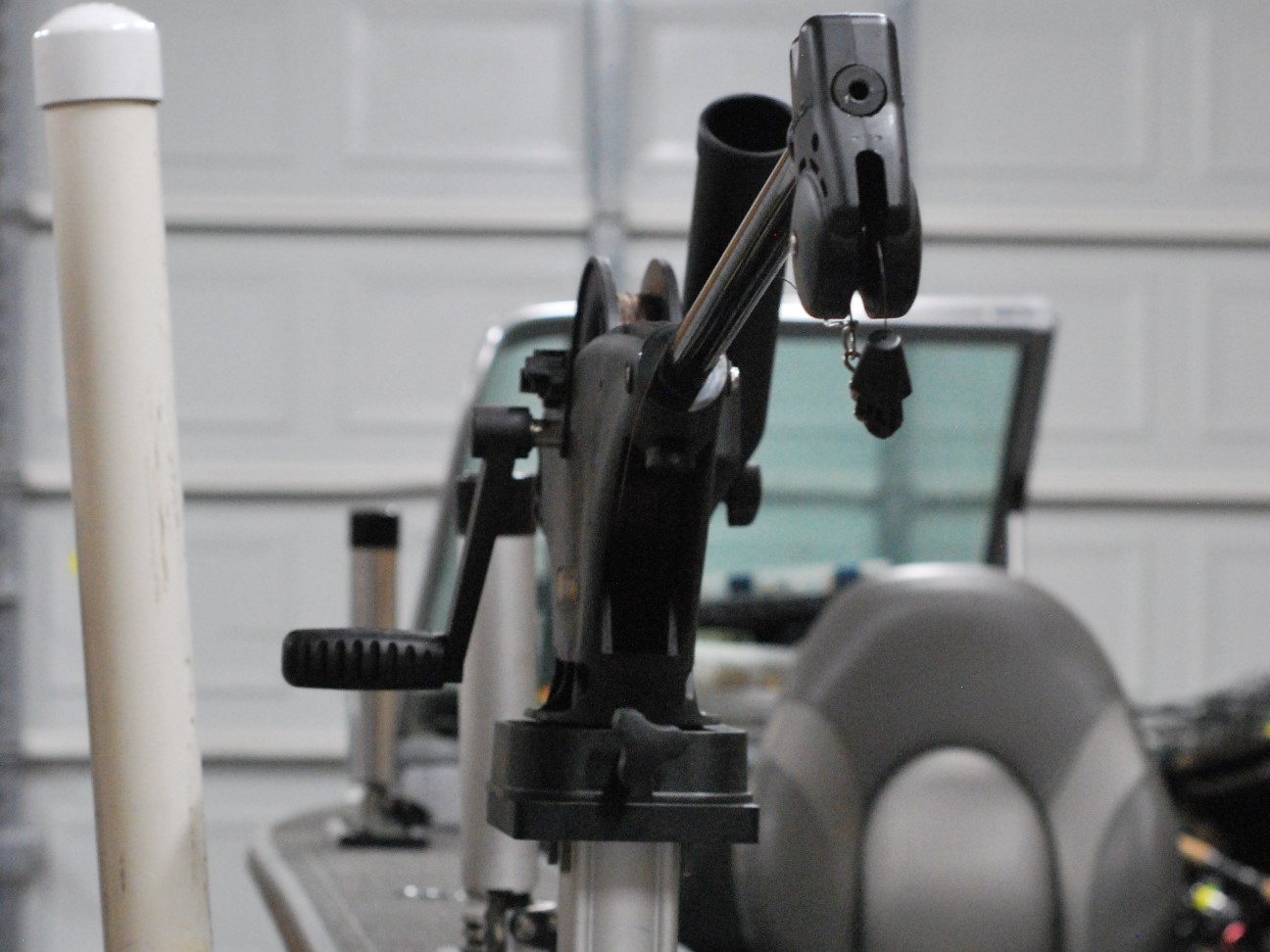
* This page contains affiliate links. The Great Lakes Fisherman may earn a commission on items purchased through these links. For more on this, please click here.
Have you always wanted to chase big lake salmon, but weren’t sure that you had the space in your boat to handle the task? If so, this article is for you. Here, we will go over the things I have learned to optimize your layout for small boat salmon fishing. For the purposes of this article, we will define small boat as any boat with an 8′ 6″ beam or less, with no cabin (open-layout), and that is 20′ or less in length.
Equipment
To begin, let’s go over the trolling equipment that is typically used for salmon trolling. This can obviously be tailored to your boat based on how many lines you intend to run, the space you have available on your boat, and your budget.
Track System
While not necessary, a track system is highly recommended as it makes your boat layout much more versatile, allowing you to experiment with different layouts until you find the perfect one for your boat. Many owners choose to add them as options with their initial purchase and get them right from the dealer. But you can easily add these on later. If you’re on a budget, you can purchase longer sections of track and mount them yourselves. These tracks are made from aluminum and a good miter saw with a blade with 8-10 teeth per inch will cut through them like a hot knife through butter, allowing you to maximize the material by cutting them specifically for the available space on your boat. We use track from Bert’s Custom Tackle, but there are several different manufacturer’s that make tracks systems.
Downriggers
Having downriggers allows you to fish the lowest portions of the water column. While absolutely required for deeper water, downriggers aren’t really necessary if you spend most of your time fishing water in the top 100′ of the water column. If you are just looking to fish a time or two in the spring or fall each year, you can probably get away without them. But during the hot summer months, many of the salmon go deep and downriggers are about the only way to get down there.
If you are considering downriggers, a great budget option for small boats is the Cannon Uni-Troll 5 Kit. These units will get your baits down to 200′ which is likely deeper than you would ever need to go. When choosing a location for mounting downriggers, it is important to be sure that units are easily accessible to operate and that the boom gets the cannonball away from your boat without the likelihood of swinging back into the boat and causing damage. The Cannon Uni-Troll 10 has an extendible boom for situations that require one. The ideal placement of downriggers on a small boat is at the 2 back corners of the boat.
Downriggers can be mounted right to your boat or using adapters to mount to a track system. They can also be placed on swivel bases that allow you to swing the boom to the ideal angle for your setup.
Divers and Diver Rods
These are key items for smaller boats as they allow you to get your baits fairly deep (up to ~100′) without the use of downriggers. Dipsey divers are the most popular, due to their ease of use and versatility. Dials on the back of the diver allow you to set the angle the diver will dive away from the boat.
The depth of the diver is determined by the amount of line you let out, making a line-counter reel a must for these rods. A great choice here is the Okuma Cold Water Linecounter Trolling Reel.
For the rod, we use rods made for dipsey divers, which are typically made with a stronger backbone to handle the hard pull of the diver. But you can get away with any stiffer standard trolling rod for this. A good length for the rod is 8’6″ – 10′.
Weighted Lines and Planer Boards
A weighted line is a lead-core, copper or other wire line that will sink and go deeper the farther the line is let out. While I won’t be getting into too much detail on the difference between these (that’s a whole article by itself), just be sure that if you choose to use a weighted line, you get the appropriate reel to handle it.
In-line planer boards are the most popular way to use weighted lines. They allow you to spread the lines out horizontally from the boat, increasing the number of lines you can run at one time. This is where use of lead core and wire line comes into play because these tend to be the lines that will sit highest in the water column. Of course, you don’t need these lines if you intend to use plugs or other diving lures, but the weighted line will allow you to get as deep as 50 feet with your trolling spoons and flasher/fly combos.
As with the reels, the rods you need for your planer boards will largely depend on the type of line you choose to run. A standard 8′-10′ trolling rod can handle lead-core and standard mono or braid. However, should you choose to run copper wire, you’ll need to select a rod with stainless steel guides as the wire will damage the ceramic guides in a standard rod.
Rod Holders
In order to place your rods on the boat, you’ll need some fairly stout rod holders to handle the stress applied when a big fish hits. Typically, the downriggers come with their own rod holders, but you’ll still need some extras for your diver and planer board rods. A great choice for individual holders with track mounting is this one from Bert’s Custom Tackle. The ratchetting actions allows you to get the right angle for the rod while trolling, while also providing a place to hold the rod upright when running to and from your fishing grounds. Another popular way of handling rod placement is to use a rod holder tree which gives you the ability to stack the rods vertically. This works great for the planer board rods and keeps more of your rods near the back of the boat where they are more accessible.
Rod Layout and Spread
Now, let’s talk layout. Below is a diagram of the way a typical rod layout would look in a smaller boat. Starting from the back, downriggers are mounted on each corner of the boat. For small boats, 2 downriggers are ideal as there is not typically enough room to run more. Four downriggers are possible, though and if you intend to fish deep a lot, a second set just back of the first set along the side with an extended boom is often possible. This keeps the back of the boat open for landing fish.
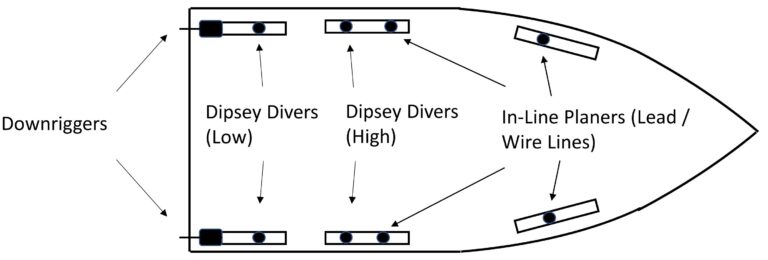
Behind the downriggers come the low and then high divers. These are the next highest in the water column. Finally, the wire lines on planer boards which should be the highest lines in your spread. You can really run as many of these as you like. You are really just limited to the spacing of rod holders on your boat (and of course, regulation restrictions). If you use a rod holder tree as mentioned above you will likely not need to place any rods in the bow section of your boat.
In the water column, the spread should form a ‘V’ pattern as depicted below. This puts your deepest lines straight behind the boat and your shallower lines out and away from the boat. Not only does this maximize the distance between the baits and your boat, it reduces the chances of tangled lines when a fish hits. This is because a hooked fish will tend to move up in the water column and towards the area straight behind the boat as that is the path of least resistance for the fish. Because each line it passes is lower in the water column, there is little chance of a tangle.
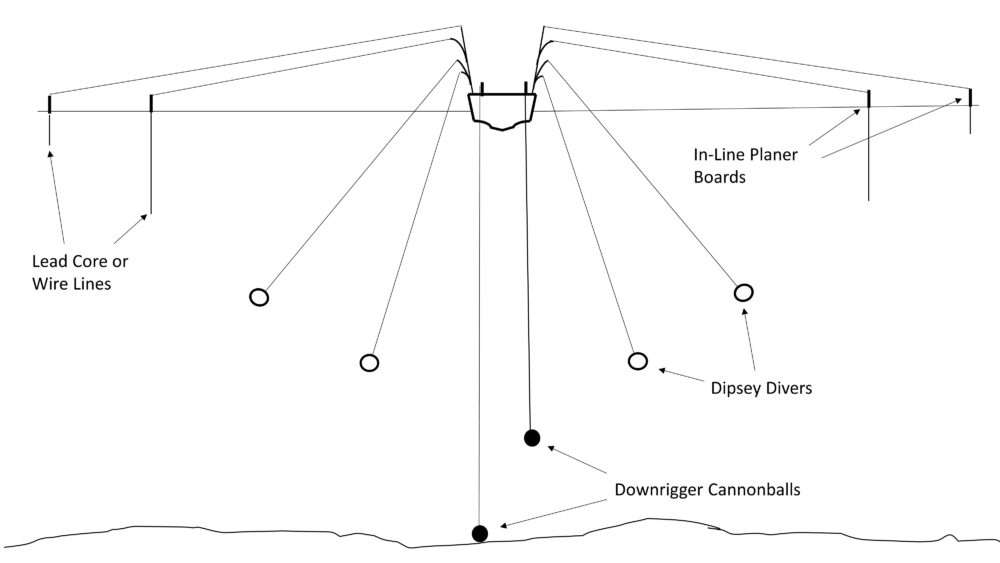
Other Considerations
Once you have all of the trolling gear laid out, you’ll need to consider room for a few other things.
Fish Storage
Some smaller boats have a built-in place for fish storage, but many do not. You need a pretty good sized cooler to put salmon in, and you’ll need to store it somewhere. The best place on these boats is in the bow area. This clears the back end of the boat, allowing for room to operate your equipment and fight and land fish. You’ll probably want to secure it somehow as having a salmon land in your lap after hitting a wave on the run back in is no fun.
The Net
You’ll also need a landing net large enough to land a salmon. This is again best stored in the front of the boat. A spare rod holder works best and can be placed in any open track you have up front.
People
The biggest limitation with small boats is the number of people you can have on board, comfortably. By the time you load the boat up with the appropriate equipment to make the trip worthwhile, it can start getting crowded if you have more than 4 on board. Of course every boat is different so depending on your layout and boat length, you may have room for 5, but for most boats, four is the most you’ll want before people start getting uncomfortable.
Non-Native Species in the Great Lakes
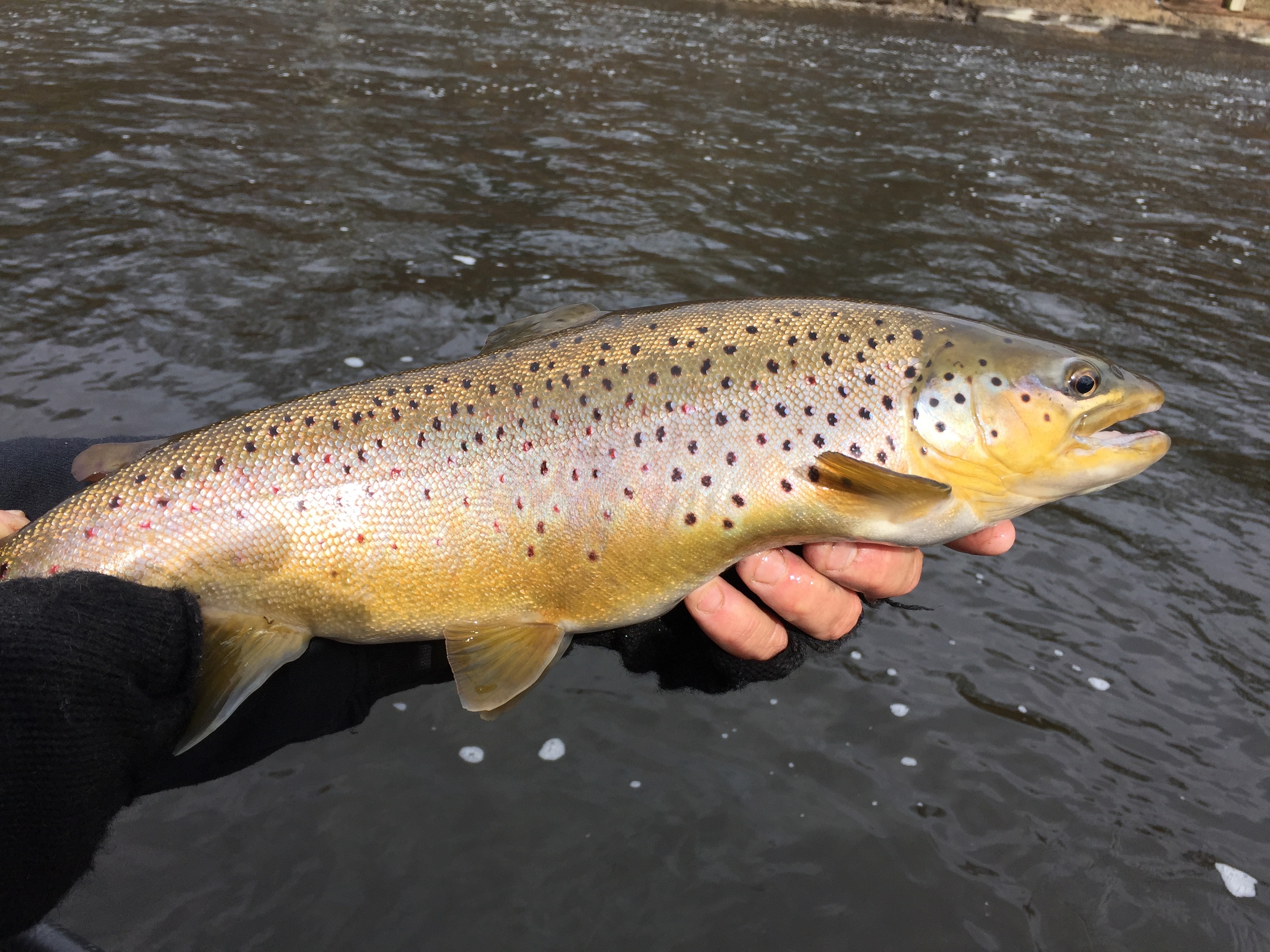
* This page contains affiliate links. The Great Lakes Fisherman may earn a commission on items purchased through these links. For more on this, please click here.
The Great Lakes contains dozens of non-native species of fish. Some of these fish were introduced accidentally and some, by design. While you probably know about some of these, such as the sea lamprey or the round goby, you may be surprised by some of these fish that you thought have always been here. Here, we will examine some common species you didn’t know weren’t native to the Great Lakes.
Alewives
Alewives are a forage species of fish from the ocean. Like many non-native species, they are believed to have arrived in the Great Lakes via the dumping of ship ballast water in the 1860s. Once they were here, they competed for food with native species. To help control their populations, salmon were introduced.
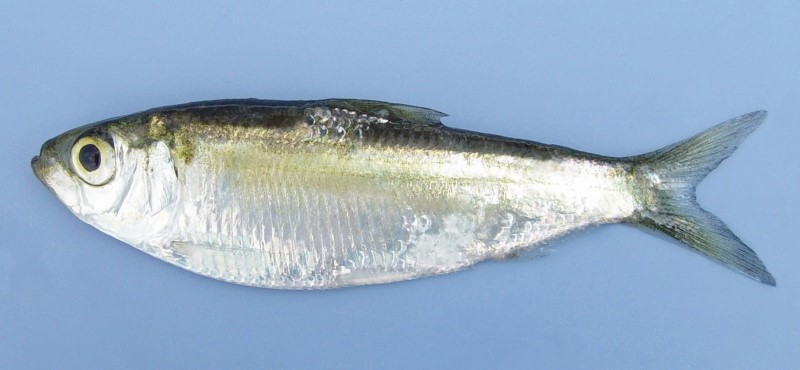
Salmon
There are 4 species of Pacific salmon (chinook, coho, pink & kokanee ) that have been stocked in the great lakes since the 1870’s. Although there were previous attempts to introduce salmon to the lakes, it wasn’t until the 1960’s, when alewife populations had exploded, that the salmon populations established themselves. While 3 of these species persist to this day, the kokanee (sockeye) salmon was not able to sustain itself and is believed to have died out shortly following its introduction.
In addition to the 4 Pacific species of salmon, there is one additional species of salmon, the Atlantic salmon, that is found in the Lakes. However, this species has a slightly different story. The Atlantic salmon was native to Lake Ontario until the late 1800’s when overfishing, pollution and the destruction of spawning habitat is believed to have resulted in the demise of the population. Similar to the introduction of the Pacific salmons, the Atlantic salmon, having failed introduction several times prior, finally became established in the 1970’s due to the high alewife populations.
Common Carp
Common Carp are believed to have been brought to the region in the 1800s because of their popularity as a food source in Europe. According to the Michigan DNR, the carp are not considered by authorities to be “invasive” as they don’t cause harm to the state’s economy or the environment. The common carp is a species of the minnow family.
Buffalo
Although they look similar to the carp, buffalo come from a completely different family. These fish are the largest members of the sucker family. There are 3 species of buffalo (out of 5) that are in the Great Lakes and all are non-native. Two of them, the smallmouth buffalo and the bigmouth buffalo, are believed to have been introduced in the 1960’s while the black buffalo is believed to have been introduced in the 1980’s. The process of their introduction is not yet understood.
Flathead Catfish
Though the source of their introduction is still being investigated, flathead catfish are known to have been in the Lakes since the 1920’s when populations were discovered in the Kalamazoo and Grand Rivers, tributaries of Lake Michigan. The range of these fish is reportedly still expanding into the northern reaches of Lakes Michigan and Huron. To date, their impacts to other species appears to be minimal to non-existent.
Round Goby
The round goby is one of the more recent species to have been introduced to the Great Lakes, having only established themselves here in the last 30 years. The round goby is another species that arrived through ship ballast water dumping. While the goby has its downsides, it has provided a benefit to the world-class smallmouth fishery that the Great Lakes offer. For more on the relationship between the round goby and smallmouth bass, check out this article.
Rainbow Smelt
Although smelt are a popular gamefish and table fare, many people don’t realize that these fish are not native to the Great Lakes. Rainbow smelt were planted in Crystal Lake in northwest Michigan in 1912. The fish made their way to Lake Michigan via the Betsie River and quickly established themselves in all of the Great Lakes.
Populations of these species have declined sharply in recent decades and researchers aren’t entirely sure why. It is largely believed that the introduction of quagga and zebra mussels into the food chain is a contributor, but the exact mechanisms of their impact are unknown.
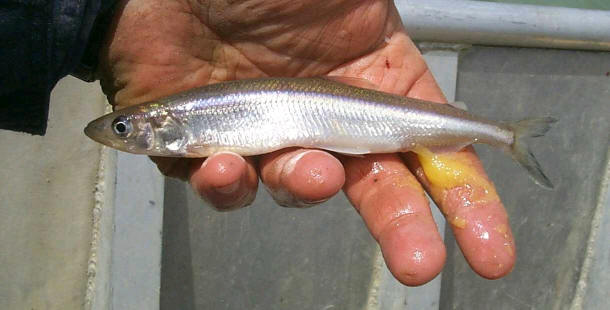
Grass Carp
The grass carp is 1 of 4 species of invasive (Asian) carp that are posing one of the most significant threats to the Great Lakes in modern history. To date, the grass carp is the only species to have been found in the Great Lakes and measures are being taken to reduce, and hopefully eliminate, its impact. For more on the latest efforts to prevent and control impacts by Asian carp, check out this article.
Sea Lamprey
One of the more problematic species to enter the fold is the sea lamprey. Previously
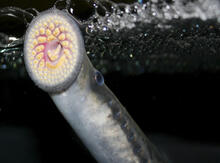
stopped by Niagara falls, the Welland and Erie canals allowed these blood-sucking parasites to enter the remaining Great Lakes upon their completion. These fish have had devastating impacts on other Great Lakes species and have required millions of dollars in annual funding to control their populations.
White Perch
The white perch is another species that took advantage of man-made canals to progress into waters further inland. Being native to the North Atlantic region of North America, these fish can now be found throughout the Great Lakes thanks to the construction of the Erie and Welland canals which allowed their passage deeper into the lake system.
Brown Trout
Brown trout were introduced to the region via stocking programs. Not only are brown trout not native to the Great Lakes, they are not even native to the United States. Brown trout were brought to the U.S. from Germany in the mid-1800’s. Like salmon, early attempts to stock brown trout in Lake Michigan were unsuccessful and it wasn’t until the
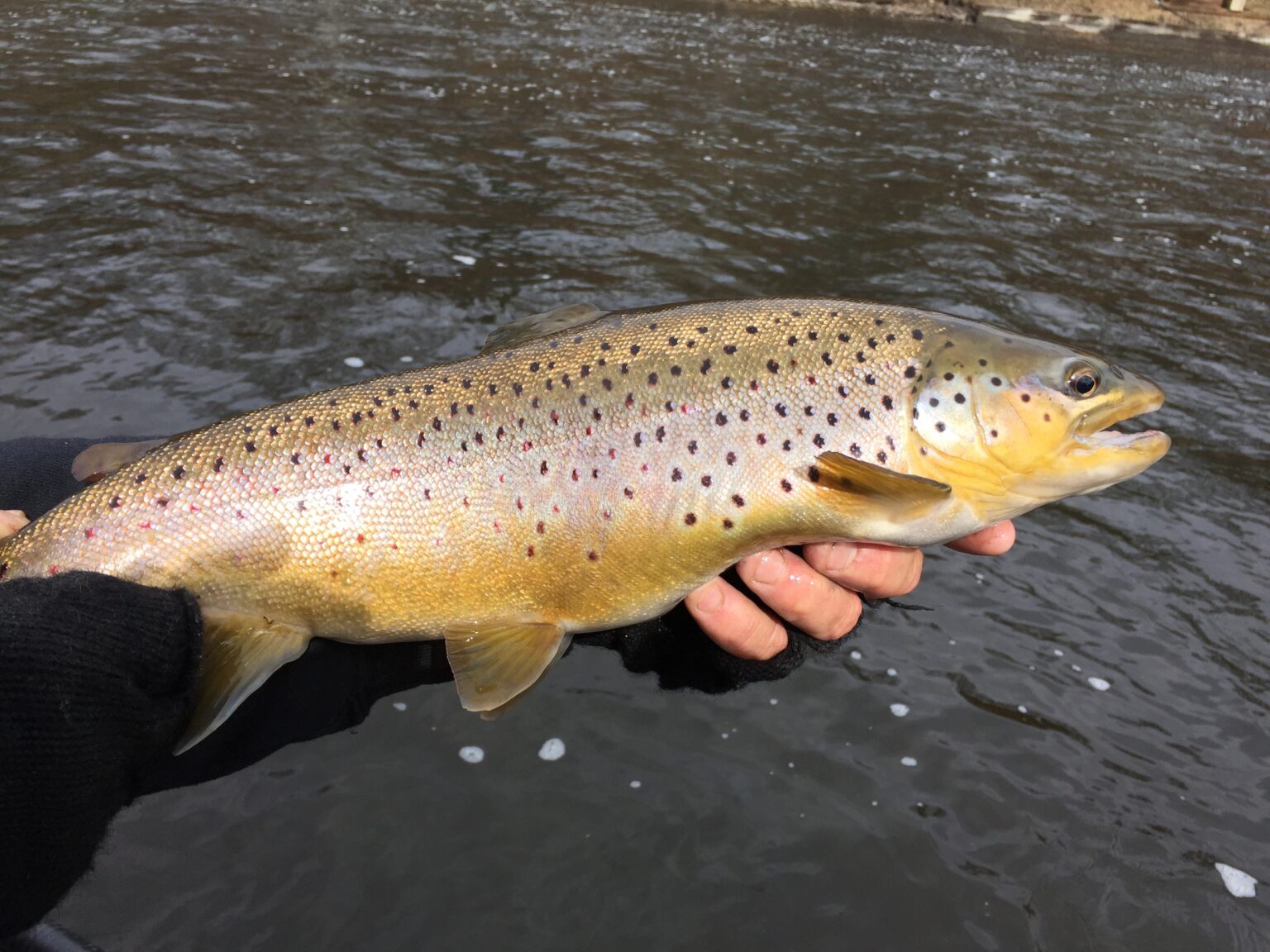
1960’s that the fish took hold as a result of newly refreshed stocking programs.
Rainbow Trout & Steelhead
Rainbow trout and steelhead were also introduced to the Lakes via a stocking program in the late 1800s. These fish had more success than did the programs for brown trout. Rainbow trout are inland fish that live and spawn in the same range. The anadromous (lake/ocean migrating) form of the fish known as the steelhead, live much of their lives swimming in the open lakes but migrate to their native streams and creeks for spawning. Steelhead are now one of the most popular fish to pursue in the region, offering folks in the eastern half of the country a taste of what the west coast has had all along.
Redear Sunfish
Relatives of the bluegill known as redear sunfish were believed to have been introduced to the region around 1928 when they were stocked in some Indiana waters. These fish are known as “shellcrackers” in their native region of the southeast, due to their ability to crack mollusk shells. They have proven
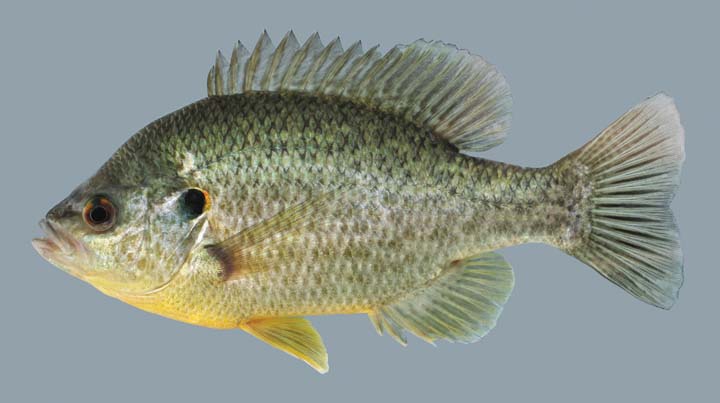
to be a popular gamefish both in the summer and through the ice and tend to inhabit similar waters as their other sunfish cousins.
Blackened Fish

* This page contains affiliate links. The Great Lakes Fisherman may earn a commission on items purchased through these links. For more on this, please click here.
This recipe for blackened fish is very basic but never fails to impress. It’s our favorite way to cook fresh, Great Lakes salmon, but works well with just about any fish. If you don’t like spicy, be sure to eliminate the cayenne pepper. You can also substitute your favorite dry rub for the cajun seasoning and the recipe works just as well; but be sure that the rub you use has salt in it. If not, you’ll want to add some to the fish prior to cooking.
Recipe
Serves: 6-8 Prep Time: 10 min. Cook Time: 10 min.
Ingredients
The Fish
- 2 lbs. boneless, skinless salmon (or your favorite fish) fillets
- 2 tbsp. cajun seasoning (see recipe below)
- 2 tbsp. olive oil
Cajun Seasoning
- 2 parts each: garlic powder, paprika, salt
- 1 part each: oregano, onion powder, thyme, black pepper & cayenne pepper (optional, for heat)
Directions
For best results, use fillets that are of uniform thickness. I like to cut the thicker fillets horizontally to create thinner pieces of meat. Make sure the fillets have been rinsed and dried thoroughly. Cut the fillets into serving sized-portions. Lightly dust the fillets in the seasoning and then brush with olive oil. (Note: Be sure to add a little salt if the seasoning you use doesn’t have it.)
Heat a cast iron skillet (preferred) or non-stick pan until it is very hot. Sear seasoned fillets for 2-3 minutes on each side, just until fillets are just cooked through. You may need to cook a little longer with thicker fillets.
Move the fillets to a plate to let them rest for 5 minutes.
Serve over your favorite rice and side veggies.
A New Year’s Resolution
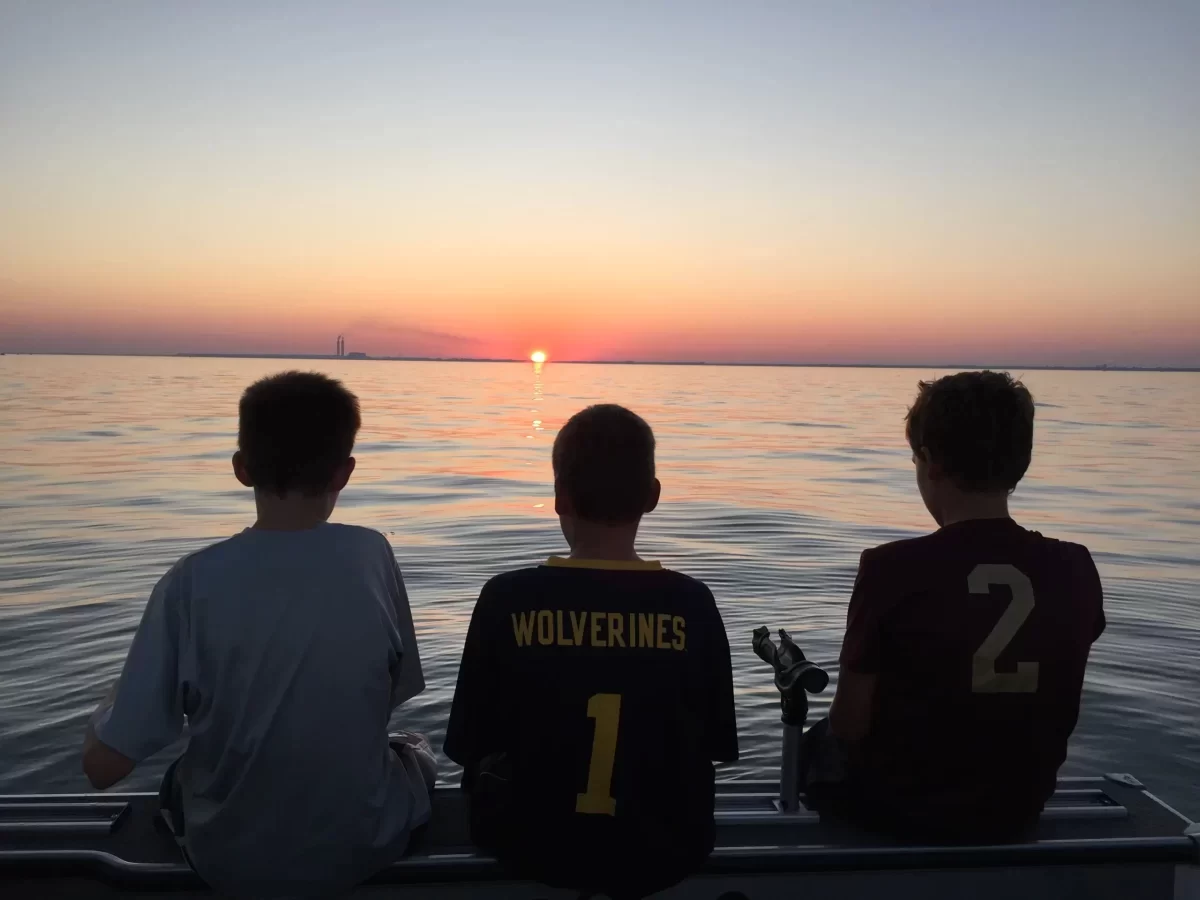
* This page contains affiliate links. The Great Lakes Fisherman may earn a commission on items purchased through these links. For more on this, please click here.
It’s that time of year when we all take time to reflect on our lives. We take inventory of where we stand and try to find something that we can change in the new year to improve our lives or the lives of others. And if you are still looking for one, we have a great New Year’s resolution for fishermen: Take a
kid fishing! Here, we make the case for why this is so critically important for the future of the outdoors.
The Importance of Conservation
Why is conservation so important to us? What a dumb question, right? The answers seem obvious: clean natural resources, maintaining healthy wildlife populations, keeping plenty of public land available for the outdoors person. But lying just under the surface of all of this is the foundation, the basis, of our strong desire for conservation – the unmatched life experiences that the outdoors provide for us and our families.
We have all had those moments in the outdoors, striking impressions from nature that come in the moments when we least expect them. These impressions usually come to us when our minds and bodies are at ease, and we are immersed in the distinct senses of nature along with the people in our lives that make us the happiest. It is a high that is almost indescribable to those who have never experienced it.
It might be a foggy morning on Lake Michigan, which could be mistaken for an endless plate of glass, waiting for the first salmon reel to sing. It might be that crisp, sunny October morning in the poplars with only the sound of dew dripping from the tress, searching for the first grouse flush of the day. Maybe it’s the anticipation we feel sitting inside an old, musty-smelling deer blind as light breaks on opening day.
Regardless of how or when they hit us, these experiences change our lives forever. We begin to spend endless hours looking for the next one or trying to re-live one prior. The experience can be so intense, that they drive many of us on a life-long quest to recreate these moments for our children and our grandchildren. This is known as legacy and to ensure that it is here for subsequent generations, we must have conservation.
The Modern Threat to Conservation
In the early parts of the 20th century, threats to conservation were becoming obvious. The effects of over hunting and fishing and unregulated pollution from the industrial revolution were glaring. By the time I was a child, growing up in the 1980’s, many laws had already been enacted to protect wildlife populations and clean up the environment. These newer laws would take time to work, however. Even then, I can still remember the distinct smell of the Detroit River throughout most of my childhood years. You always knew when you were within a mile or so of the river because of that odor. In addition, a lure dropped into the water was only visible for a foot or so below the surface. This was a clear indication of just how much was being dumped into the river at that time. Today, that smell is long gone and the water clarity has improved significantly. These are both the signs of an improved ecosystem and a conservation success story.
However, these threats are being replaced by another threat to conservation that is equally concerning – a lack of participation and support. In 2022, the forms of enjoyment that children seek are very different from what they were 40 years ago. Far fewer young people are venturing into the outdoors. Cell phones, video games, and TikTok are threatening future support for conservation and the outdoors. Children are not as exposed to the joys of nature as they once were. This makes them much less likely to get involved with the outdoors as adults. Now more than ever, it is important to expose young people to these experiences.
What Can We Do?
So, what can we do to help ensure the future of conservation? Obviously, financial support is always needed and welcome. But there is another, even more important way of providing support to conservation that is free: Introducing a young person to the outdoors.
It seems cliché, but simply getting a kid out there is the most important step. If you feel like you are not a good enough fisherman or hunter to take a kid along, you are missing the point! The value is in the experience. Success is just icing on the cake. While it helps if the fish are biting or the deer are moving, the experience itself is eye-opening for those who haven’t been out there before.
On more than one occasion, I have introduced kids to fishing only to come back empty-handed and feeling like I had completely failed them. After all, I know how disappointing it feels to come home with an empty live well after a long day on the water. But to my surprise, not only did they have a great time, but in every case, they couldn’t wait to go again! And this brings
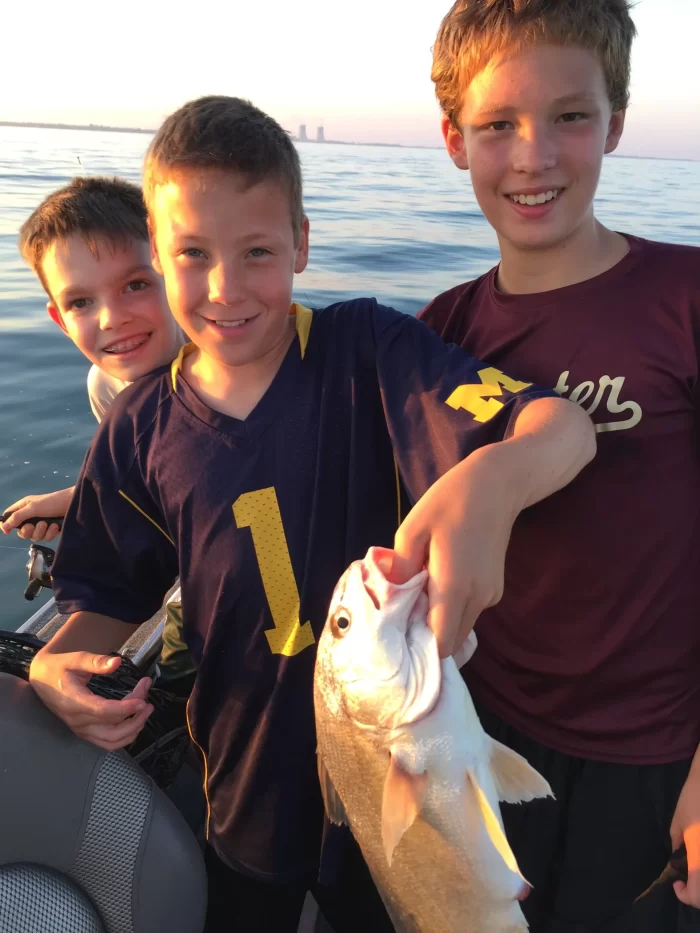
us full-circle back to one of the very reasons for conservation – the unmatched life experiences.
A New Year’s Resolution
To help ensure that our outdoors legacy continues, I have a New Year’s resolution for you. While you are sitting in your easy chair with a glass of eggnog this holiday season, planning your favorite outdoor activity in 2023, include a young person in those plans. It can be anything from bluegill fishing to trolling for salmon, from shooting trap to hunting deer. The enjoyment is inherent in the activity. There is nothing better your can do to help ensure the legacy of the outdoors for future generations.
By introducing a kid to the outdoors, you really are lending support to conservation by growing the support base. In addition, you will make some of the best memories for your kids and their friends. What else can provide so much impact to your cause by simply doing what you love with others?
Gifts For Ice Fishermen
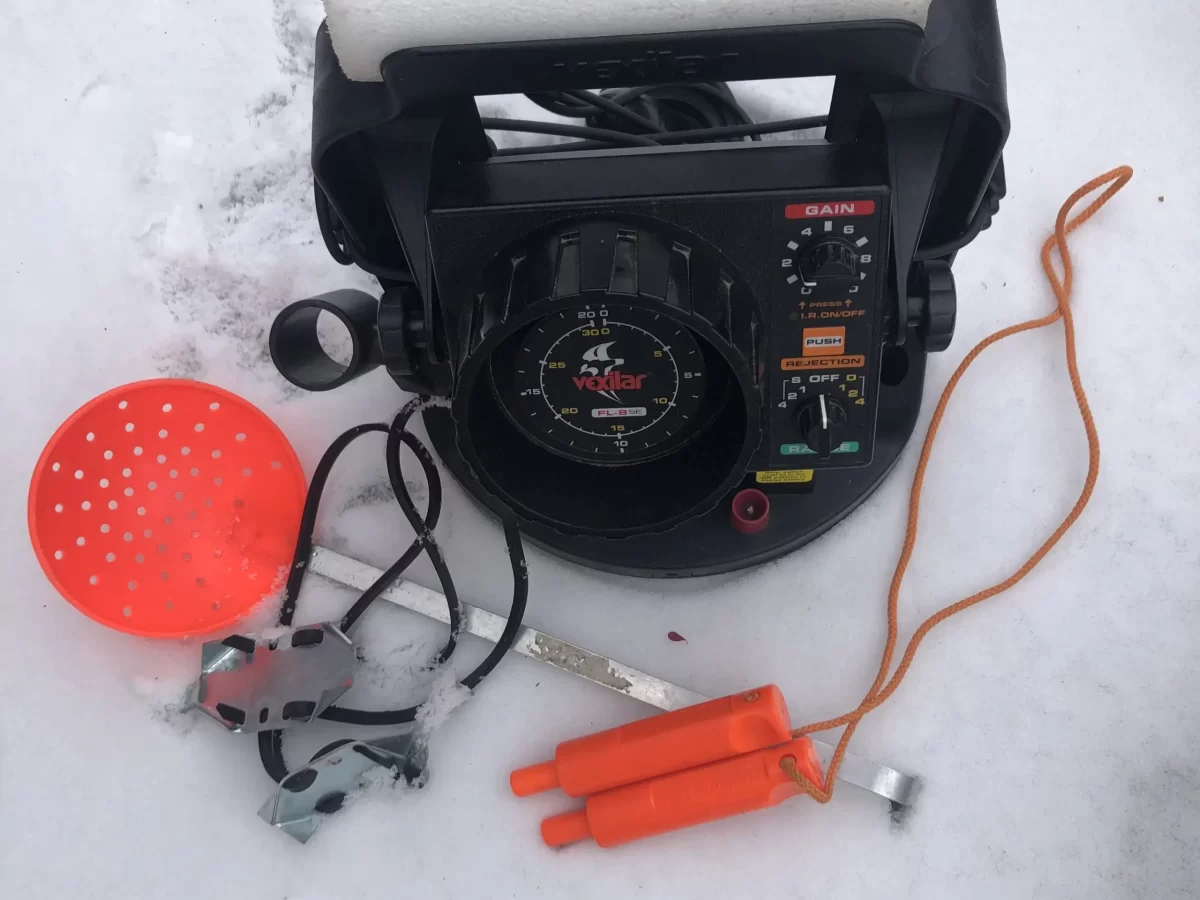
* This page contains affiliate links. The Great Lakes Fisherman may earn a commission on items purchased through these links. For more on this, please click here.
Looking for something for the ice fisherman in your life? Check out these top gifts for ice fishermen in your price range!
$0-$100 Price Range
At a time of year when minnows can be hard to come by, these make a great alternative, adding scent and a bright flash of color to catch a fish’s eye.
Mr. Crappie MC6HV Mega Spool Line, 6-Pound, 1500-Yard, Hi-Viz
Those who ice fishing know how light the bit can be. Often it is nearly undetectable on the rod. This is where high-vis line comes in handy. The slightest twitch in this line is easy to see, allowing you to detect bites that would previously have gone unnoticed.
Piscifun ICX II Ice Fishing Reel
A great buy for the money, this ice fishing reel will pair well with the rod below and is a great all-around options for fisherman who like to catch a variety of fish species.
Ice awls are a critical piece of safety equipment for ice fisherman, allowing one to pull one’s self out of the water in the event of a break-though. Simply throw them around the neck before walking out onto the ice to help ensure you can get out should an emergency arise.
Those who have tried, know that walking on smooth or wet ice can be nearly impossible. These cleats are a best seller on Amazon and come at a great price.
Tip-ups are a great way to increase your ice coverage and thus, your catch. This basic pair of foldable tip-ups are great for larger gamefish, such as walleye or pike. They setup in seconds and fold up for convenient storage.
This is a standard for serious ice fisherman. This heater takes portable propane bottles and provides hours of heat from a single bottle. Pair with an insulated shanty, take off your coat and enjoy ice fishing like never before!
Engel ENGLBC7-N 7.5qt Live Bait Cooler with 2nd Generation 2X2 Portable Aerator Pump
This item is a godsend for those who frequently use live minnows. This cooler comes with its own air pump to keep your minnows alive all day without worry. The pump can be operated with batteries. This 7.5 qt model is perfect for ice fishing!
St. Croix Rods Legend Black Ice Fishing Rod
This 24″ light action rod is the perfect choice for panfish. This rod, made by St. Croix, comes with it’s own built-in strike indicator. St. Croix is a legend in the rod-building industry so you can purchase with confidence.
Strikemaster Ice Fishing Mora Hand Auger
Price at Listing: $86.57
This manual ice auger is a great economical choice for those weekend ice anglers who only drill a few holes each time out and typically fish on ice that is less than 1′ in thickness.
$100-$500 Price Range
StrikeMaster Lite-Flite Lazer Drill Unit 6″
A great choice with a modern cordless drill with a 1/2″ chuck. These augers take the manual labor and gas fumes out of drilling holes. This lightweight item also removes unnecessary weight of a gas auger from your sled, making it easier to pull your equipment on the ice. A true win-win for any ice fisherman! (Drill is not included)
Eskimo Quickfish 3 Pop-Up Portable Hub-Style Ice Fishing Shelter
Fishing shanties make a huge difference when it comes to comfort on the ice. It doesn’t take much wind in the winter to make being outside very uncomfortable. These affordable floorless insulated shanties by Eskimo provide enough space for 3 to enjoy a comfortable day on the ice and they setup in only 60 seconds!
There is no single item that improves the success of ice fisherman more so than a flasher unit which allow you to see both the fish and your bait in real time. Marcum is one of the leading brands of flasher units and is a favorite of those in the great lakes region.
Vexilar GP1812 FL18 Genz Pack 12Deg Ice-Ducer Combo
Vexilar is a leading brand of sonar flashers. There is no single item that improves the success of ice fisherman more so than a flasher unit which allow you to see both the fish and your bait in real time. These units are one the biggest game changers in the life of an ice fisherman and you can’t go wrong with a Vex!
Catching Crappie Through the Ice at Night
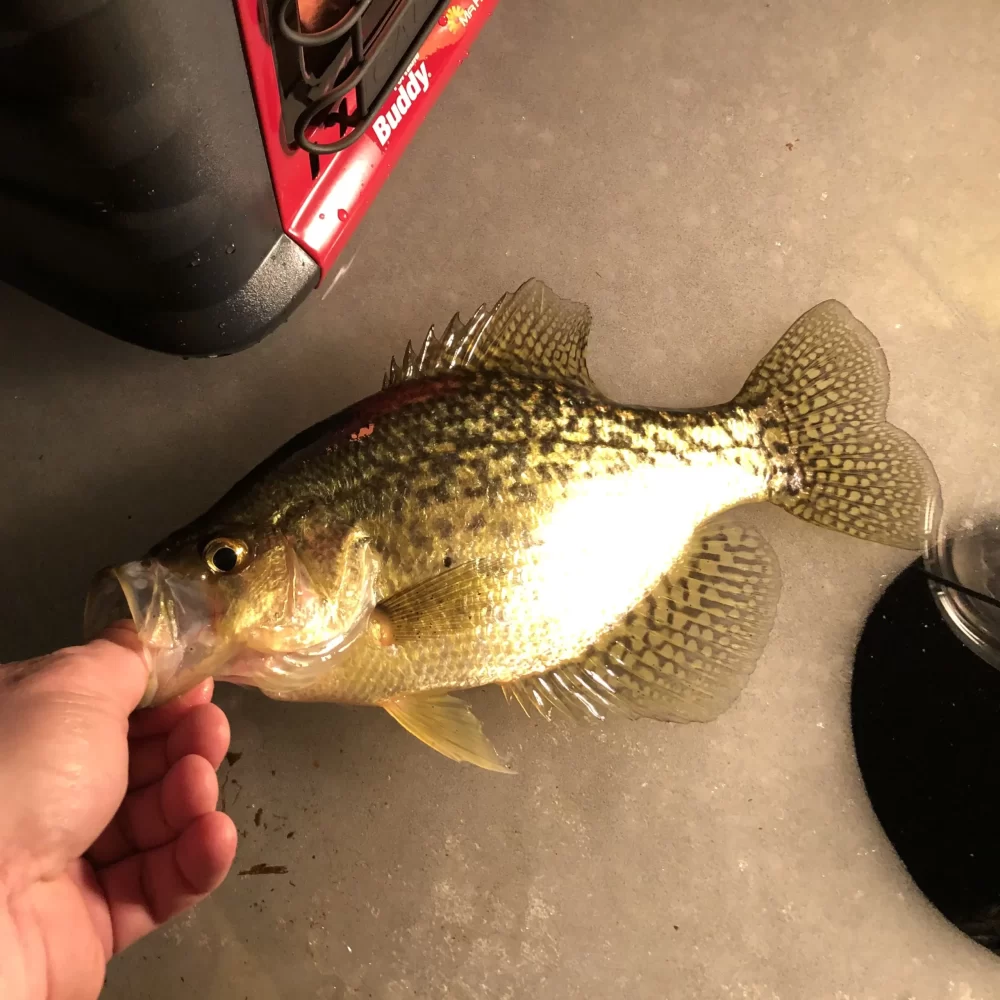
* This page contains affiliate links. The Great Lakes Fisherman may earn a commission on items purchased through these links. For more on this, please click here.
One of the most popular fish species to target through the ice is crappies. They also happen to the be a favorite of The Great Lakes Fisherman. While these tasty fish can be caught throughout the day on most lakes in the Great Lakes region, crappie are a low-light fish. This means that the best times of day to target them, especially in clear water, are in the early morning and late evening hours. In fact, one the most productive times of day for catching crappie is just before sunset to several hours after dark. But ironically, just when the crappie are starting to bite, most fisherman are heading to the car. With a little preparation and the right equipment, however, fishing into the night can be one the most rewarding experiences on the ice. If you’re new to this type of fishing and don’t know where to start, read on! The following info will help get you onto the fish fast.
Safety First
The first thing to consider when ice fishing after dark is safety. Being alone by yourself after dark can be dangerous. Always take a friend along to make sure you have help in the case of an emergency. The last thing you want is to get into trouble while you are alone out on a lake in the dark with no one around to help.
As always, follow all general ice fishing safety tips. You can find some great ice fishing tips in this article. To that end, be sure to arrive well before dark to ensure that the ice conditions are safe. This way, you can get to your spot, get setup and have time to check out the surroundings to be sure there are no obvious dangers before you lose daylight.
Finally, remember that there is always risk associated with ice fishing. When in doubt, don’t go out. Live to fish another day!
Equipment Needed
Aside from all of your standard ice fishing equipment (rod, reel, bait, auger, etc.), there are a couple of things you will need to make your night trip a success.
First off, you will need a strong light source. There are a couple of main options that you have for this, the first of which is a lantern. These come in both gas and electric varieties.
When it comes to gas lanterns, Coleman makes a dual fuel gas lantern as well as a propane lantern. Either of these are great options and will do the trick. One of the advantages of a gas lantern are that they also supply a source of heat to keep your hands warm.
The second main option for a light source is a submersible light Be sure to check your local regulations to be sure that they are legal in your jurisdiction.
Regardless of which light source you choose, the main thing is you need something that will penetrate the water column. The deeper the water you are fishing, the stronger the light you will need.
The second thing that you should have is a sonar flasher unit. Although not required, this is highly recommended as it greatly increases your catch rate, especially on the ice. For one, it lets you know if there are any fish under you. This is particularly important for ice fisherman because you are forced to fish from a single spot and lack the mobility of open water fishing. Second, it let’s you know where in the water column the fish are located. When fishing for species that tend to reside close to the bottom, this isn’t as critical because you can always find the bottom. Crappie, however, can be found throughout the water column. Without knowing specifically where they are, you can fish all night right, right over fish without a bite because you have your bait at the wrong depth. Third, it provides real time feedback on how the fish are reacting to your presentation. There is no single piece of fishing equipment that has improved my catch rates more so than a sonar flasher for ice fishing.
Calling in the Fish
Fishing under a light at night is the key to attracting crappies. Why? Because you are effectively building a food chain right under your feet! Here’s how.
Stage 1: Getting a Light Cone Established
The first stage in the process is getting the light cone in place. It doesn’t hurt to get your light going once it starts to get noticeably darker. It takes some time for the light to start working, so if you wait until dark, you may be waiting longer into the night before the bite really gets going.
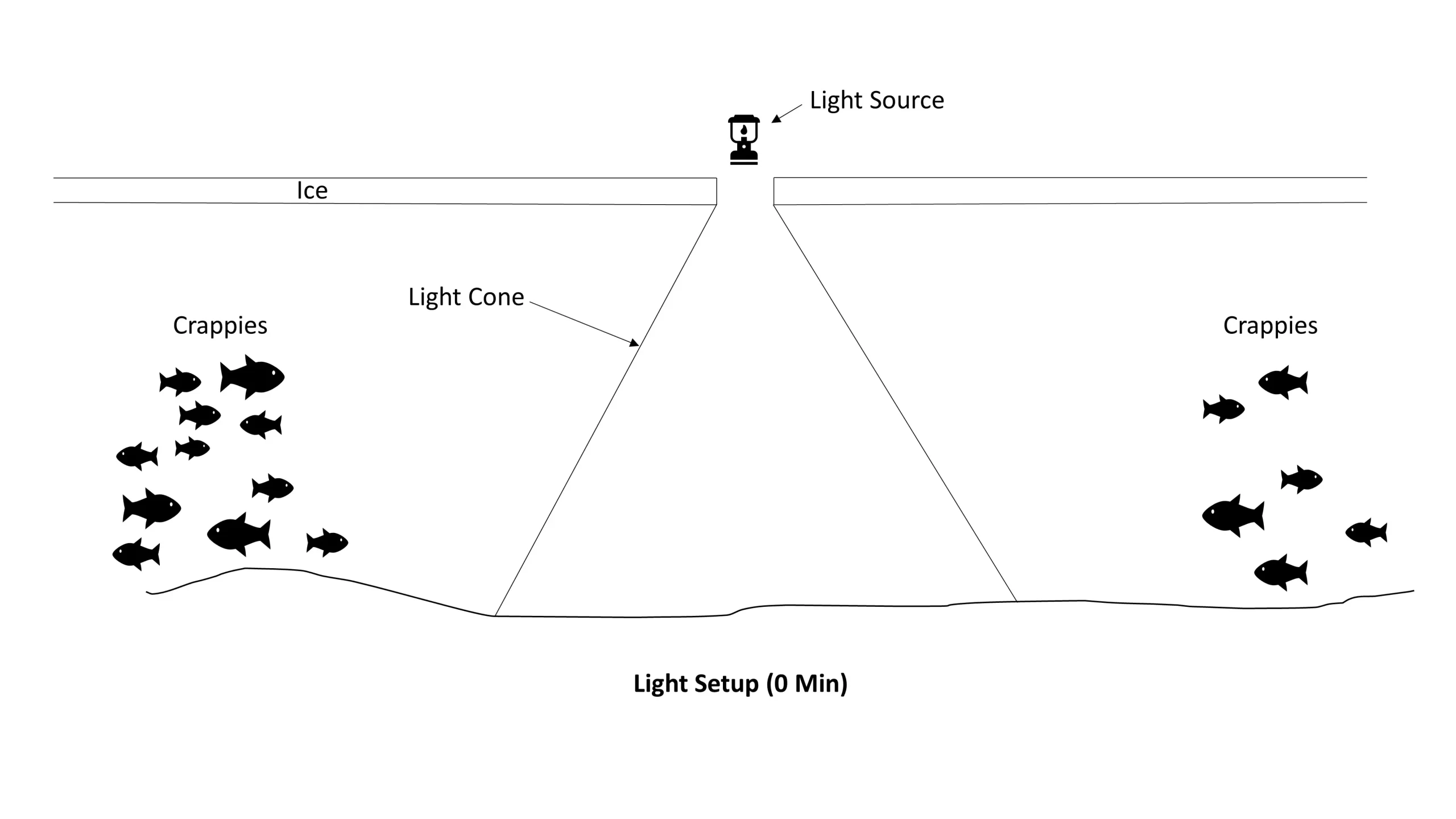
Stage 2: Plankton Show Up
As the light in this cone becomes brighter than the ambient light under the water, it will begin to attract plankton. These organisms provide food for minnows and other small fish.
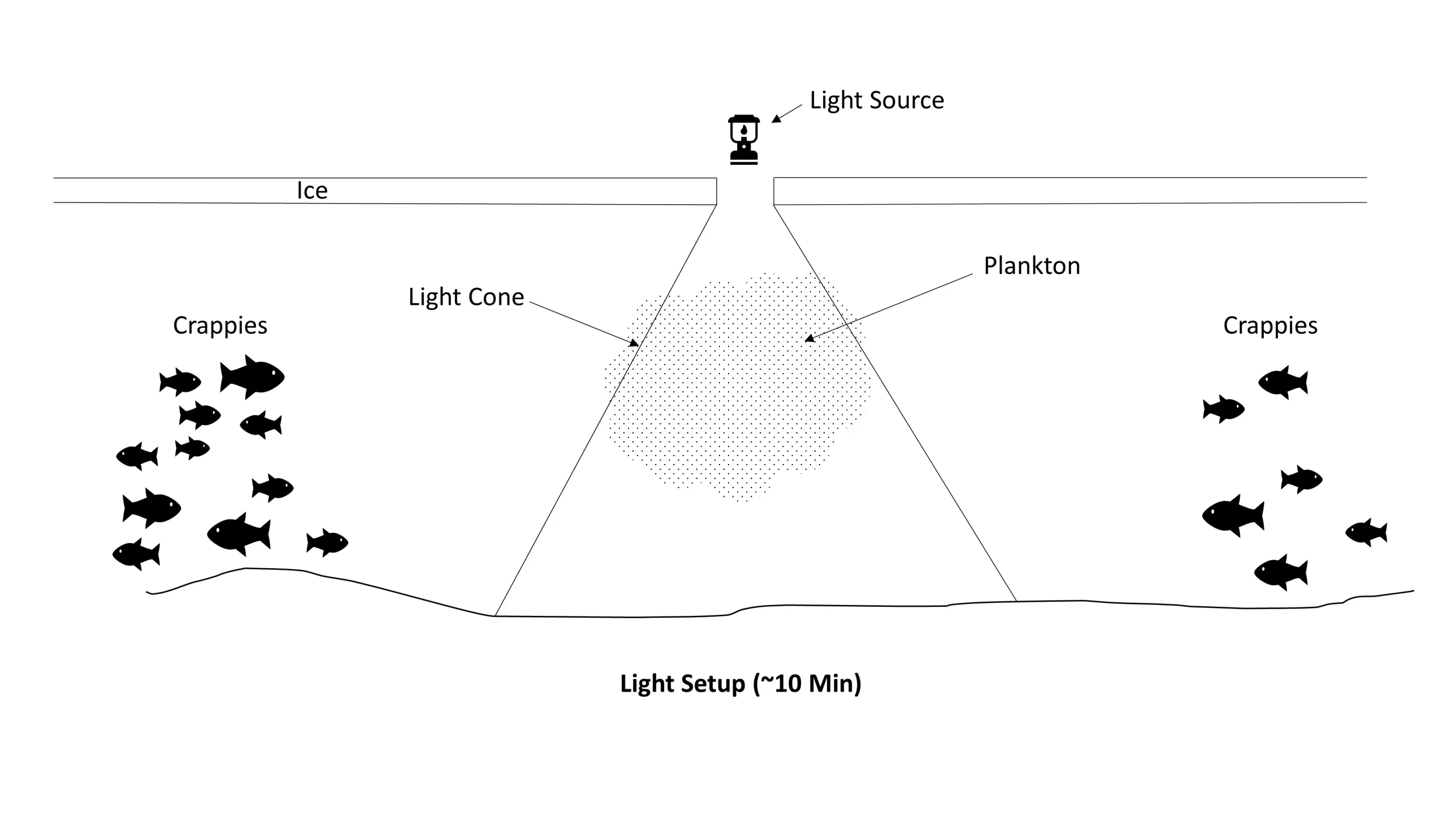
Stage 3: Minnows Show Up
Once the plankton cloud has established itself in the light cone, minnows will begin to show up to take advantage of the concentrated food source.
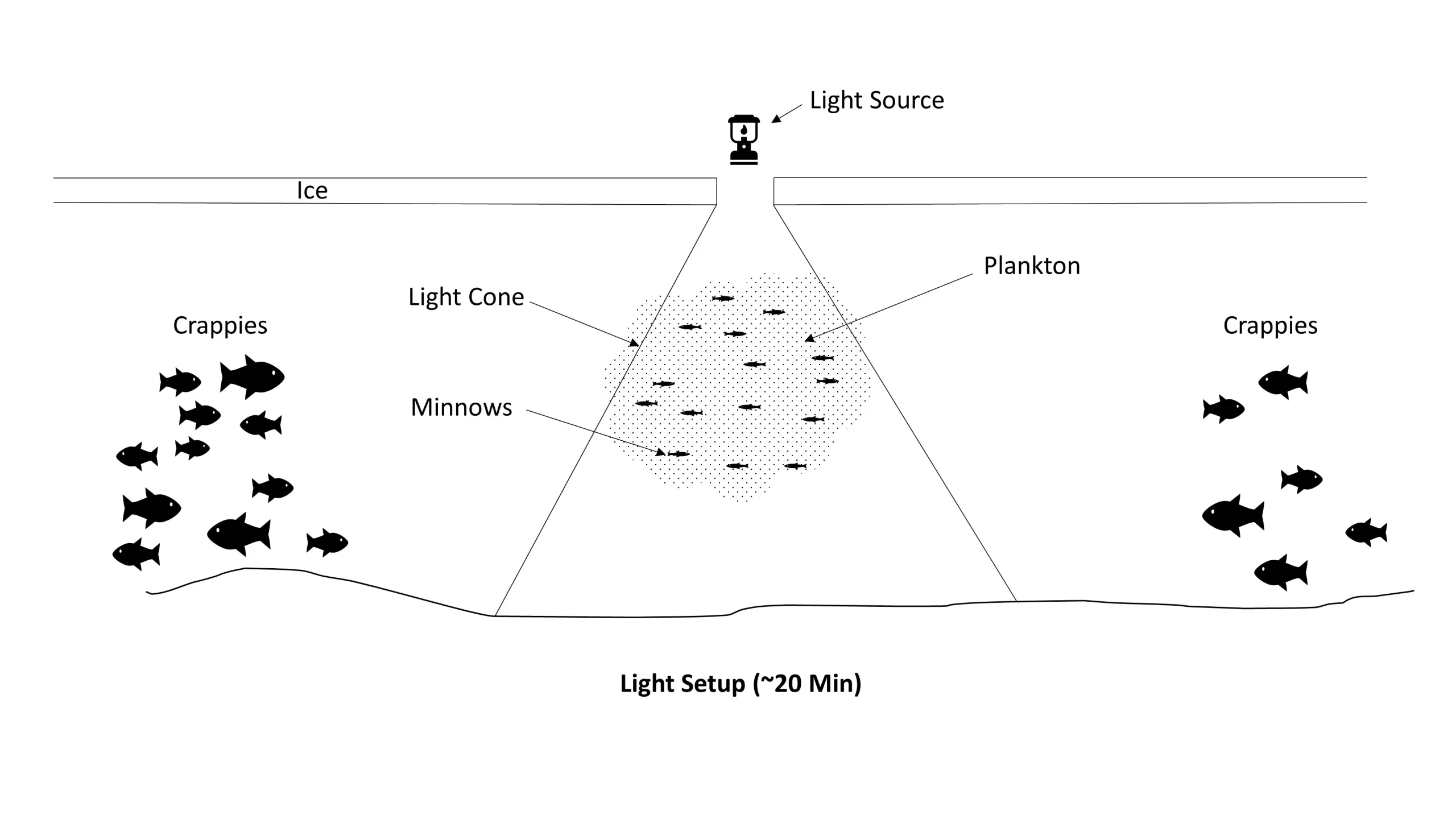
Stage 4: Crappies Show Up
Finally, crappie and other gamefish show up to begin feasting on the minnows. Now it’s time to catch some slabs!
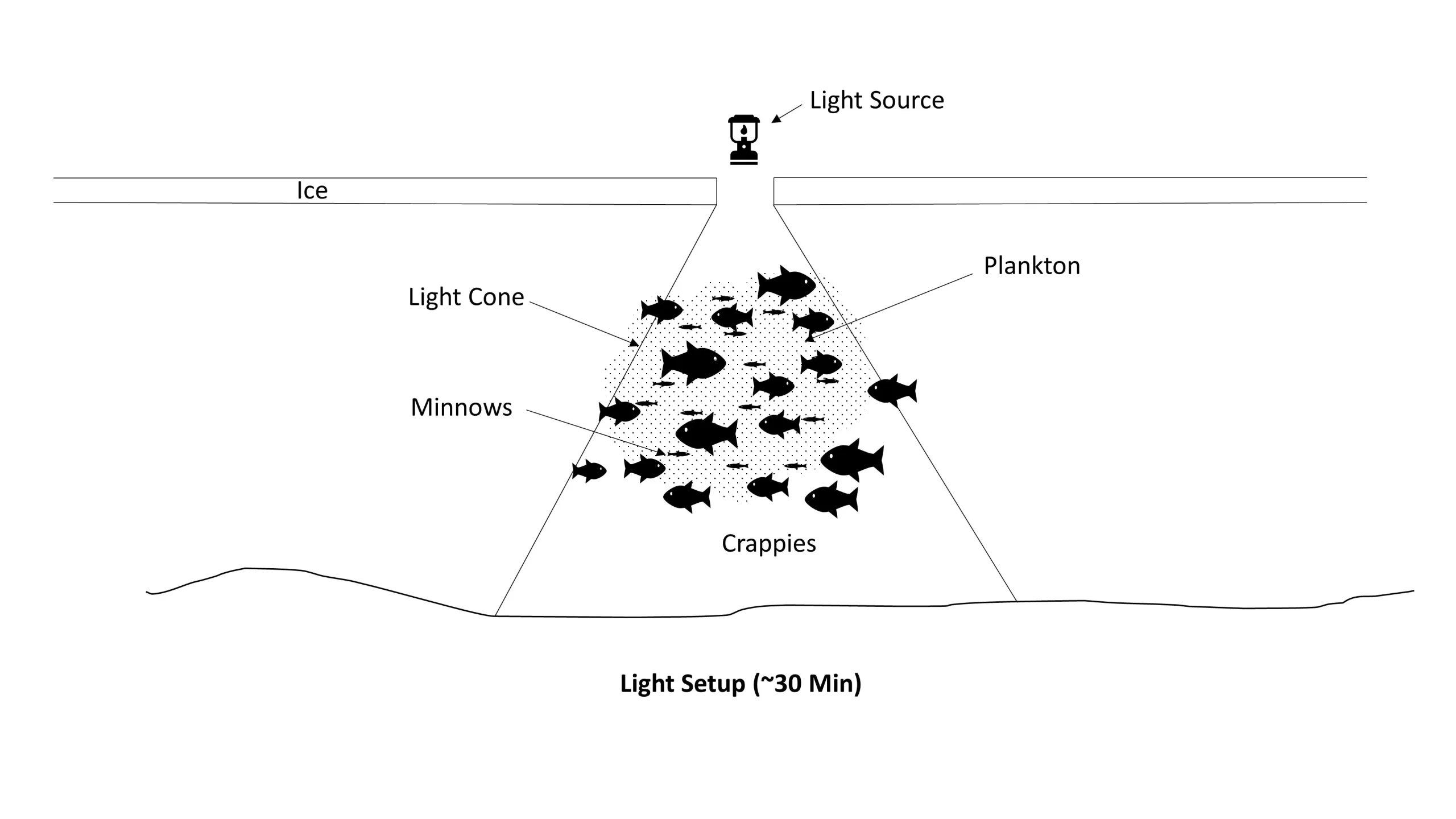
This technique is very productive as long as you are in the general area where crappies are known to inhabit. If after 30 minutes in one location there are no signs of fish, it’s probably time to move.
Catching Crappie
Now that the fish are here, it’s time to catch them. But how?
Crappie are built to hunt for prey above them. If you don’t believe it, just take a look at a crappie from the top. You will notice that both eyes are clearly visible, which means that both eyes can easily see anything that moves above them. With the lantern light providing a bright backdrop, the plankton and minnows are easy to see, making feeding easy.
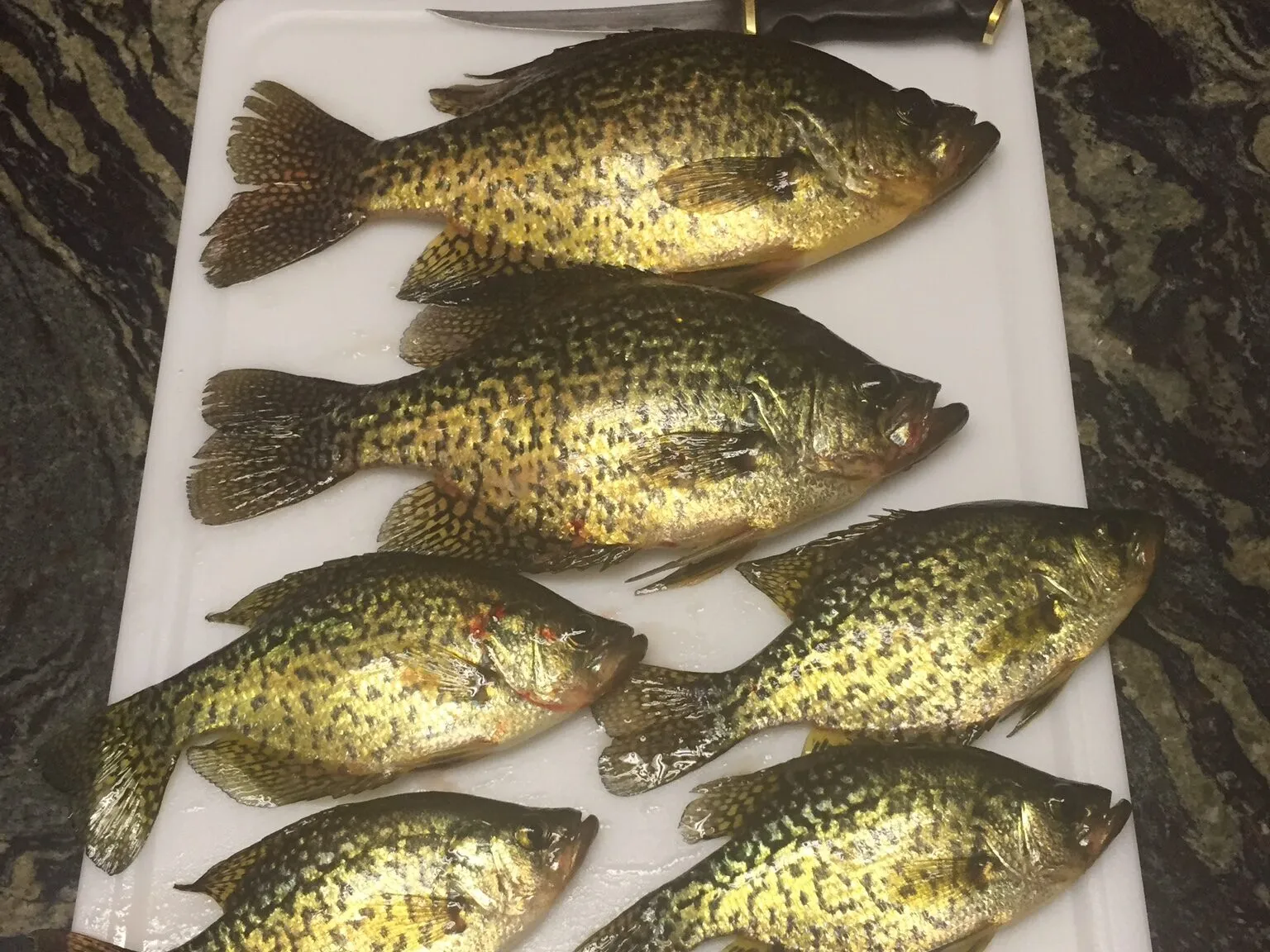
When targeting these fish, a common technique is to slowly lift your bait (usually a minnow or grub-tipped jig) using a slight jigging action. This will trigger a strike much faster than any other technique. If you are using a flasher (sonar) unit, start your bait at or just below the fish you are targeting and, using a jigging motion, bring your bait up slowly. You may notice the fish starting to follow the bait once it gets a foot or so above them. If they start to chase aggressively, a common technique is to abruptly stop the jig. This will result in the crappie sort of “running into the bait” unexpectedly which often times will elicit a strike. Just keep repeating this pattern on different targets. You may find fish at certain depths are more active than fish at other depths.
Night time fishing for crappies is one of the most productive ways I have found to catch these fish in the north. With a little experimentation, you will find the baits, colors and techniques to fill your bucket in no time. If you have any questions or are still struggling to find and catch crappies using the information in this article, feel free to drop me a comment below or send an email and I’d be happy to help provide some advice!
Stay safe out there!
Ice Fishing Preparation & Safety
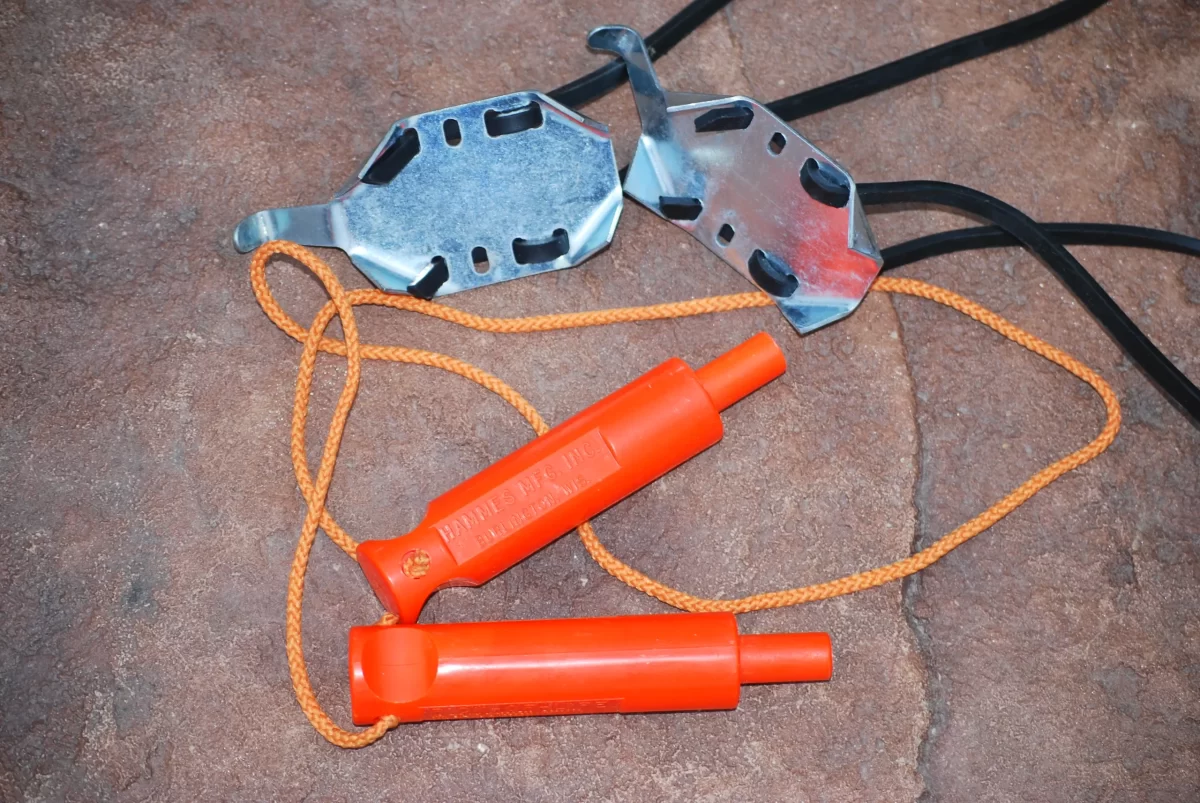
* This page contains affiliate links. The Great Lakes Fisherman may earn a commission on items purchased through these links. For more on this, please click here.
It’s that time of year when upper Midwest fisherman transition from the soft water to the hard water. For those that aren’t familiar with the term, “hard water” is fisherman speak for ice. This is a true passion for many, with some actually preferring ice fishing to any other.
While ice fishing can be an enjoyable way to spend the cold winter months, proper preparation is necessary to ensure a safe and comfortable day on the ice. Whether you are new to ice fishing or a seasoned veteran, proper preparation is the key.
Ice Thickness and Quality
By far, the most important aspect of ice fishing from a safety perspective is ensuring you are walking or riding on stable ice. While it is virtually impossible to know the stability of ice under the entire lake, there are some things that can be done to greatly increase the odds of breaking through.
1. Be Aware of Moving Water
Flowing water contains more energy than still water. This means that it doesn’t freeze as easily. Make sure you are aware of the locations of any streams, creeks, canals or rivers that may flow into or out of the lake you are fishing. Areas around these inlets or outlets will likely have thinner ice than the rest of the lake.
2. Be Aware of Spring Water
Another thing to mindful of is spring water. Spring water, that is, water that seeps out of the earth, tends to hold in the high 40s to lower 50s. Lakes that have active springs feeding them will tend to have thinner ice in areas around these underwater springs.
3. Check the Ice Before Venturing Out
Be sure to check the ice before getting away from shore. Make sure that you drill or spud a hole. While this doesn’t necessarily represent the whole body of water, it is a good first indication.
4. Don’t Ice Fish Alone
Though tempting it may be, fishing alone can be dangerous. It is wise to go ice fishing with a friend or family member. If you must go alone, be sure to go somewhere where there are other ice fisherman so that in the event of an emergency, you have access to help from others.
5. Don’t Venture Far from the Pack
Staying close to other ice fisherman is important for a couple of reasons. First, if you are new to a body of water, it provides an indication of where the safer ice is. In addition, should you have an emergency, help is not far away.
Safety Gear
There are a few items that every ice fisherman should have when it comes to safety gear. Here is a short list.
1. Ice Awls
Ice awls are essentially ice picks that can be driven into the ice by hand to help provide leverage to pull yourself out should you fall through the ice. Many are designed so that the picks are retracted into a plastic sleeve or housing to prevent you from accidentally spiking yourself. When the awls are slammed downward and into ice, the plastic retracts allowing the steel to penetrate the ice. This allows you to pull yourself out without assistance.
2. Ice Cleats
Walking on a smooth, ice covered surface can be very difficult. And if that ice is wet, not only can it be nearly impossible to walk, but there is serious danger of a slip hazard. This is where ice cleats come in handy. Ice cleats are to your boots what snow chains are to tires. They provide spiked pressure points on the soles of your boots that allow you to walk on the slickest of ice, slip-free.
3. Carry a Whistle
This may seem simple, but a whistle worn around your neck will help you alert others should you have an emergency that requires help. Nothing fancy – but the louder the better.
4. Dress in Proper Attire
An often overlooked safety issue for ice fishermen is frost bite. When you are ice fishing, your hands will eventually get wet with water that is hovering around 32ºF (0ºC). Combine this with even colder winds that blow unobstructed across the lake, and you have a recipe for some dangerously cold fingers. Appropriately rated apparel, including good boots and gloves, are a must for a worry free and comfortable day on the ice.
“But”, you may say, “I have a good shanty and a heater, so I don’t need to worry about having all that stuff on.” As the old saying goes, it is better to have it and not need it, than to need it and not have it. Removing an extra layer is easy if you are getting too warm. But you can put it back on if the temperature drops, the wind picks up, or your heater runs out of fuel.
Following the above tips will help ensure that you have a safe and comfortable day out on the hard water!
Salmon Patties

* This page contains affiliate links. The Great Lakes Fisherman may earn a commission on items purchased through these links. For more on this, please click here.
Never tried salmon patties? You’re gonna love them. I am told smoking the salmon before canning it puts it on another level. This recipe also works well with canned mackerel.
Recipe
Serves: 2-4 Prep Time: 20 min. Cook Time: 10 min.
Ingredients
- 1-15 oz. can of boneless, skinless salmon (or mackerel)
- 1 tbsp. Old Bay seasoning
- 1 egg
- 1/4 cup of Italian bread crumbs
- 1/4 cup of diced onions (optional)
- 2 tbsp. olive oil
- Remoulade (optional)
Directions
Drain the can of salmon and flake the fish with a fork. In a separate bowl, whisk 1 egg.
Combine the salmon, egg, bread crumbs and diced onions (if desired) thoroughly with a fork. Mold into patties. One can should make 2 large patties or 4 smaller patties.
Heat a cast iron skillet (preferred) or non-stick pan until it is very hot. Add olive oil and wait 30 seconds for it to get hot. Sear patties until each side is uniformly browned, usually 3-4 minutes per side.
Drizzle the patties with the remoulade and serve.
An Update on Asian Carp
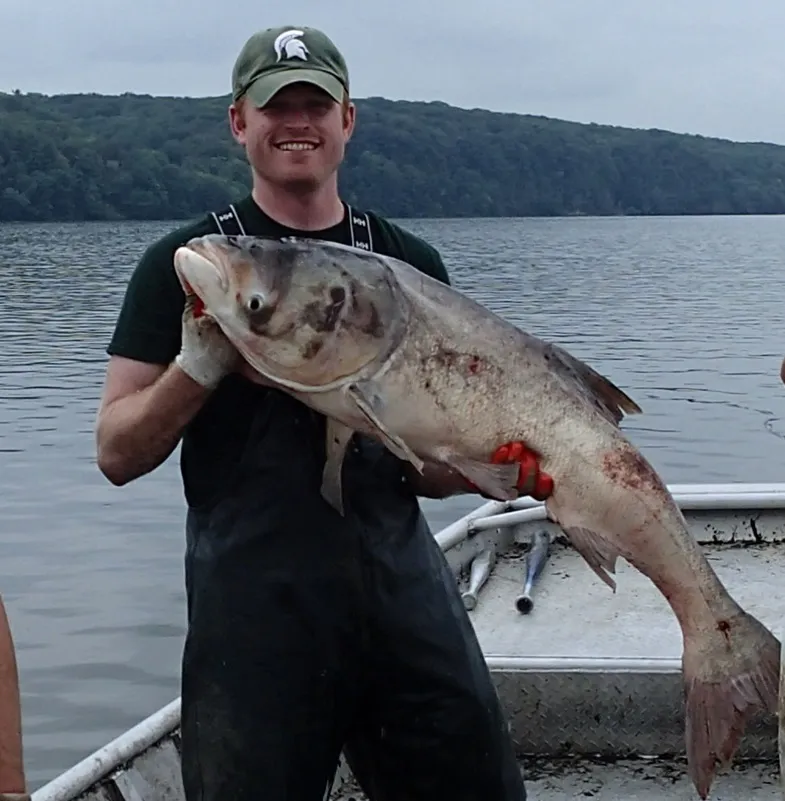
* This page contains affiliate links. The Great Lakes Fisherman may earn a commission on items purchased through these links. For more on this, please click here.
Unless you are new to the Great Lakes region, you have probably heard about the invasive carp. These fish have been the topic of serious debate over the last few decades among local, state, and federal officials as they pose a major threat to the Great Lakes ecosystem. Having been inadvertently released from rearing ponds in the south during flood events in the 1960s, these fish quickly spread throughout the south and lower Midwest in the 1970s, ’80s and ’90s.
Invasive Carp
In all, there are 4 species of carp that threaten the lakes: bighead carp, black carp, grass carp & silver carp. The grass carp has already been found in parts of the Great Lakes. The good news is that most of these fish were found to be sterile, likely because they were transplanted from private waters where triploid (sterile) versions of the fish are permitted. However, there have been some diploid (non-sterile) versions found over the last decade, mostly in Lake Erie tributaries. Efforts are underway there to eradicate these fish. For more on this, see the Lake Erie Grass Carp Adaptive Response Strategy.
The bighead and silver carp are the species of most concern due to a couple of factors. First, they are already present in the Illinois River System with only a man-made barrier currently keeping them at bay. Second, they have a very high reproduction rate and tend to dominate ecosystems wherever they establish themselves. The fear is that the Great Lakes could be over-run with these fish should they establish themselves on the other side of the barrier. So it should be no surprise that hundreds of millions of dollars have been and will continue to be spent on efforts to prevent their entry and protect our valuable resources.
Apart from the ecological threat, the silver carp also presents a physical threat due to a behavioral trait that makes them jump when startled. When boat motors run through large schools of these fish, they can jump out of the water by the hundreds. This can pose a serious safety hazard for those in the boat. Though the thought of it may seem funny, being hit by a 20-40 pound fish while travelling at high speeds is no laughing matter. People have suffered broken bones from collisions with the jumping fish.
Although the black carp is not yet geographically a direct threat to the lakes, their range continues to expand and they could one day become a bigger problem.
Recognizing the threat early, efforts began in the 1990’s to install barriers to prevent the carp from getting into the Great Lakes tributary system. The largest barrier in this effort to date was constructed on the Chicago Sanitary and Ship Canal (CSSC) and placed in service in 2002.
Known as the Electric Barriers, this facility establishes a continuous electric field across the waterway that will kill any carp that attempt to swim across it. But even with this barrier in place, there is concern among authorities that it is not enough, and only a matter of time before fish populations establish themselves on the other side.
Q & A with Seth Herbst of the MI-DNR
The Great Lakes Fisherman recently caught up with the Michigan Department of Natural Resources to find out more about the invasive (Asian) carp, their threat to the Great Lakes, and the latest measures being considered to prevent their entry.

Seth Herbst is the Aquatic Species and Regulatory Affairs Unit Manager with the DNR Fisheries Division. Prior to joining the MDNR in 2013, he earned his B.S. in Fisheries and Water Resources from University of Wisconsin-Stevens Point, M.S. in Aquatic Ecology and Watershed Science from the University of Vermont, and Ph.D. in Fisheries and Wildlife from Michigan State University. He also gained professional fisheries management experience working several seasons as a Fisheries
Technician with the Minnesota DNR and Wisconsin DNR. One of his primary responsibilities is to administer the Division’s aquatic invasive species (AIS) program. Additionally, he is an active member of numerous regional AIS committees in the Great Lakes region, such as the Invasive Carp Regional Coordinating Committee (ICRCC), a steering committee member for the Invasive Mussel Collaborative, a member of the Lake Erie Grass Carp Advisory Committee, and actively involved with the Great Lakes Panel for Aquatic Nuisance Species.
GLF: Which agencies are in charge of the efforts to prevent invasion of Asian carp into the Great Lakes, and how do they coordinate with state and provincial agencies in this effort?
SH: The state and provincial agencies have jurisdictional authority over the management of their respective fisheries resources, and that includes the prevention of invasive (previously Asian) carp into the Great Lakes. The state agencies actively collaborate with several federal agencies (i.e., U.S. Fish and Wildlife Service, U.S. Army Corps of Engineers, U.S. Geologic Survey, Department of Fisheries and Oceans Canada) to implement prevention and control measures to reduce the risk of bighead, silver, and black carp entering the Great Lakes. There are also several universities throughout the Midwest that contribute through research projects to advance the science of invasive carp deterrent technologies and also to evaluate innovative control methods. Additionally, NGOs [non-governmental organizations] have contributed to the issue through their advocacy efforts to promote this issue, so state and federal agencies are funded at a level necessary to effectively address the issue. The invasive carp efforts are largely financially supported through the Great Lakes Restoration Initiative (GLRI).
GLF: When we hear that invasive carp DNA has been found in the great lakes, what does that mean?
SH: When you hear invasive carp DNA, it typically refers to environmental DNA or eDNA and the means the DNA of specific species that is present in the environment as a result of genetic material being deposited. There are several potential sources that can lead to genetic material being present in the environment, such as live fish but genetic material can also come from external sources that are not associated with live fish in the waterbody of interest. The U.S. Fish and Wildlife Service implements an early detection surveillance program for bighead and silver carps throughout the Great Lakes Basin that relies on collecting waters samples and then analyzing those samples for the genetic material (i.e., eDNA) of bighead and silver carps. The eDNA results are typically reviewed by professionals to assess the risk of a positive detection. Typically, the higher proportion of positive samples from a sampling event or through time would result in more concern that live fish are present. Regardless, eDNA is one effective tool for early detection and results should be put in context with other sources of information to inform the presence of a fish species, such as traditional fisheries sampling methods and angler reports.
GLF: What are potential entry points of concern, other than through the Chicago River?
SH: The Chicago Area Waterway System is the location identified as the highest risk for the introduction of bighead, silver, and black carps into the Great Lakes. There were other connections identified during the Great Lakes Mississippi River Interbasin Study (GLMRIS) that was conducted several years ago, but those connections are lower risk and are already being mitigated through projects that removed the connections. For example, there was berm installed at Eagle Marsh in Indiana that addressed the connection between the Wabash River basin and the Lake Erie Basin that historically occurred during flooding events. The risk of introduction through the Chicago Area Waterway System is being addressed by advancing the state-of-the-art Brandon Road Lock and Dam project that would install technologies to deter fish from dispersing towards Lake Michigan from downstream areas in the Illinois River.
GLF: Besides the electric barriers in the CSSC, what other control measures are being seriously considered by authorities to prevent an invasion?
SH: There are several deterrent technologies that are being considered to prevent movement of invasive carps in riverine systems. The technologies include carbon dioxide, complex noise or acoustic stimuli, bioacoustics fish fence, and flushing jets to remove entrained fish from spaces between barges. You will notice that some of these technologies are also being recommended for the Brandon Road Lock and Dam project.
GLF: What are the economic, political, or other barriers that are could impede progress?
SH: The Brandon Road Lock and Dam project (see link above) would significantly reduce the risk of bighead, silver, and black carps entering the Great Lakes. This project, however, will come at an expense to the non-federal sponsor (State of Illinois and others willing to sign on) because the project at this time requires a 90:10 federal to non-federal sponsor financial support agreement. Therefore, a finalized project agreement might be a hurdle to overcome before the U.S. Army Corps can move forward with final design and construction.
GLF: If the carp get into the lakes, what are the most serious impacts that are expected to the ecosystem?
SH: Invasive carp pose significant ecological impacts and these impacts are described on our invasive carp website.
GLF: If carp do get into the system, what can be done to control their impacts?
SH: If invasive carp get introduced into the Great Lakes, the state would take aggressive actions to prevent the establishment of these species by implementing strategic actions identified in the Invasive Carp Management Plan. A priority would also be associated with limiting their ability to migrate upstream to complete their spawning activities. These species require open riverine environments to successfully spawn, so limiting their ability to make those upstream migrations would reduce the likelihood of establishment.
GLF: What can anglers do to help prevent a carp invasion?
SH: Anglers can report suspicious sighting of potential invasive carp using our Eyes in the Field reporting application. Also be sure to include a photo or video to help confirm identification because native fish species are commonly misidentified and thought to be invasive carp.
GLF: Is there anything else you would want anglers to know about invasive carp and the Great Lakes?
SH: The prevention of invasive carp is a top priority for our Governor and for the Department of Natural Resources. There is no evidence of established bighead, silver, and black carps in the Great Lakes and the DNR is working diligently to ensure these species don’t make their way into MI waters and the Great Lakes.
The Great Lakes Fisherman would like to thank Seth for taking the time to better inform us of the issues and efforts underway to protect our Midwest treasure. If there is more info that you’d like to learn regarding invasive carp or an other topic related to the Great Lakes fishery, please drop a comment below and let us know what’s on your mind.
